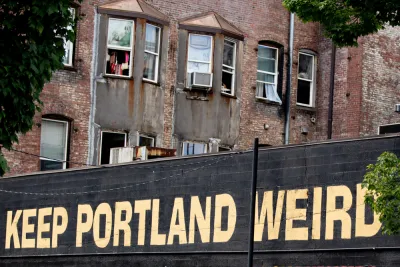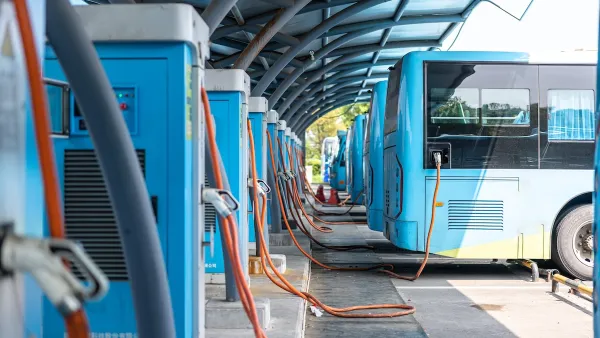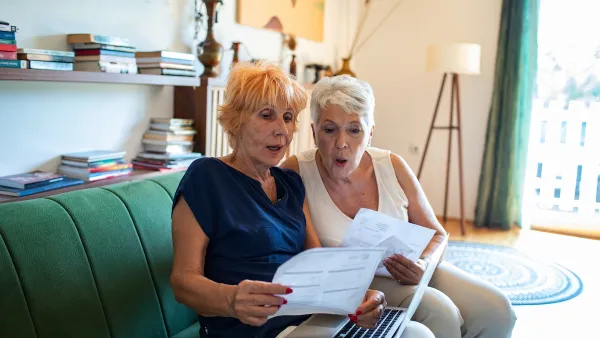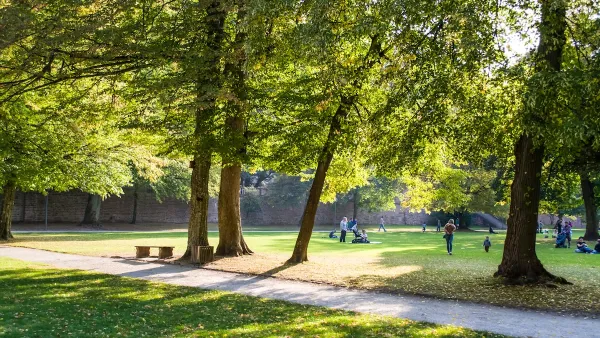A Portland coalition is drawing attention to the disproportionate impacts of unsafe and inefficient housing on low-income households and pushing for legislation that would mandate building improvements and tenant protections.

Sarah Sax reports in High Country News on the equity issues inherent in building safety, focusing on the city of Portland. "On average, Black, Latino and low-income families live in less energy-efficient homes and pay more for their energy, with low-income households spending the most, up to 38% of their income, according to the Oregon Energy Fund." In addition to the cost burden, access to heating and cooling can be a matter of life or death, as last year's deadly heat dome brought into stark focus. According to Sax, "At its core, safe, clean and affordable heating and cooling has become a justice issue."
Sax profiles the Build/Shift Collective, a community group made up of people of color and low-income renters in Portland.
Buildings are one of the largest sources of greenhouse gas emissions in the U.S., but the push to decarbonize them needs to involve more than just emissions, the activists believe. Decarbonization should also account for the unequal effects of climate change, racist housing policies and air pollution on communities of color, and it should strive to make sure everyone has access to a healthy home, not just an energy-efficient one.
The collective wants to ensure that residents don't lose housing in the effort to make buildings more safe and efficient. The group is working with the city to develop a set of rules called the Health, Equitable Energy, Anti-Displacement, Resilience, and Temperature control, or HEART, standards, which "would require landlords to insulate all units properly and have air conditioning installed" and "make sure that renters have the resources to push back whenever housing isn’t up to code, without fear of eviction."
The group is also seeking more representation for historically dismissed voices. "The collective wants more BIPOC representatives to help draft and make policy, but also to change where and how policy is made."
FULL STORY: Portland community leaders bring the heat to building standards

National Parks Layoffs Will Cause Communities to Lose Billions
Thousands of essential park workers were laid off this week, just before the busy spring break season.

Retro-silient?: America’s First “Eco-burb,” The Woodlands Turns 50
A master-planned community north of Houston offers lessons on green infrastructure and resilient design, but falls short of its founder’s lofty affordability and walkability goals.

Delivering for America Plan Will Downgrade Mail Service in at Least 49.5 Percent of Zip Codes
Republican and Democrat lawmakers criticize the plan for its disproportionate negative impact on rural communities.

Test News Post 1
This is a summary

Test News Headline 46
Test for the image on the front page.

Balancing Bombs and Butterflies: How the National Guard Protects a Rare Species
The National Guard at Fort Indiantown Gap uses GIS technology and land management strategies to balance military training with conservation efforts, ensuring the survival of the rare eastern regal fritillary butterfly.
Urban Design for Planners 1: Software Tools
This six-course series explores essential urban design concepts using open source software and equips planners with the tools they need to participate fully in the urban design process.
Planning for Universal Design
Learn the tools for implementing Universal Design in planning regulations.
EMC Planning Group, Inc.
Planetizen
Planetizen
Mpact (formerly Rail~Volution)
Great Falls Development Authority, Inc.
HUDs Office of Policy Development and Research
NYU Wagner Graduate School of Public Service





























